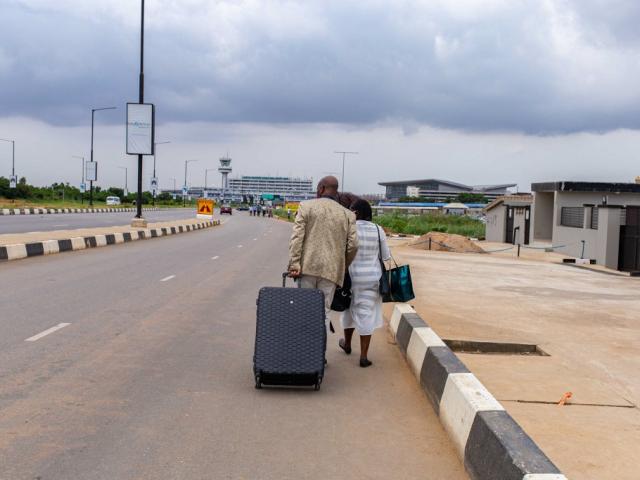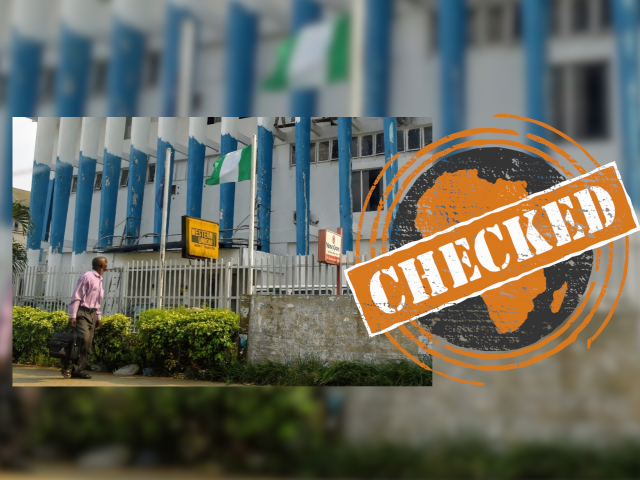“Mark 7 Nuclear Weapon. It kills and dries millions of souls in less than an hour,” says a Facebook post from 4 January 2020. It concludes: “President Trump is not laughing with the islamists!”
The post, shared in some African countries, is suggesting that US President Donald Trump would use a “Mark 7 Nuclear Weapon” against “Islamists”, presumably because of the escalating tensions between the US and Iran, a conservative Islamic state, that some have feared will lead to all-out war.
The US president is the commander in chief of the armed forces and has the “sole authority to authorise the use of US nuclear weapons”, according to a Congressional Research Service primer on “nuclear forces”.
The Facebook post is accompanied by two photos of two large weapons. It has been shared several times on Facebook. Are either of these the “Mark 7”, and could such a weapon be used by the US?

The Mark 7 nuclear bomb, or Mk-7, was first manufactured in 1952. It was the first nuclear weapon to be used by all three armed services in the US, the army, navy and air force. However, it was withdrawn in 1968 and is no longer used.
A Google reverse image search shows that the weapon in the top photo is the Topol, an intercontinental ballistic missile developed by Russia. It is Russia’s most “sophisticated” nuclear missile, according to an article published by the US-based Arms Control Association.
The second weapon shown is a mockup of a Soviet-era AN-602 hydrogen bomb, which was called the “Tsar bomb”. This is apparently the most powerful atomic bomb ever detonated but it was never used in war.
The photo shows a replica of the Tsar bomb displayed in Moscow, the Russian capital, in September 2015, to mark 70 years of Russian nuclear history.
The US has nuclear weapons and is still the only country to have ever used an atomic bomb against another country during war.
However, the Russian weapons pictured in this Facebook post would not be deployed by the US armed forces. – Jennifer Ojugbeli
The post, shared in some African countries, is suggesting that US President Donald Trump would use a “Mark 7 Nuclear Weapon” against “Islamists”, presumably because of the escalating tensions between the US and Iran, a conservative Islamic state, that some have feared will lead to all-out war.
The US president is the commander in chief of the armed forces and has the “sole authority to authorise the use of US nuclear weapons”, according to a Congressional Research Service primer on “nuclear forces”.
The Facebook post is accompanied by two photos of two large weapons. It has been shared several times on Facebook. Are either of these the “Mark 7”, and could such a weapon be used by the US?

Mark 7 nuclear bomb obsolete, photos of other bombs
The Mark 7 nuclear bomb, or Mk-7, was first manufactured in 1952. It was the first nuclear weapon to be used by all three armed services in the US, the army, navy and air force. However, it was withdrawn in 1968 and is no longer used.
A Google reverse image search shows that the weapon in the top photo is the Topol, an intercontinental ballistic missile developed by Russia. It is Russia’s most “sophisticated” nuclear missile, according to an article published by the US-based Arms Control Association.
The second weapon shown is a mockup of a Soviet-era AN-602 hydrogen bomb, which was called the “Tsar bomb”. This is apparently the most powerful atomic bomb ever detonated but it was never used in war.
The photo shows a replica of the Tsar bomb displayed in Moscow, the Russian capital, in September 2015, to mark 70 years of Russian nuclear history.
US has nuclear weapons, but not these pictured
The US has nuclear weapons and is still the only country to have ever used an atomic bomb against another country during war.
However, the Russian weapons pictured in this Facebook post would not be deployed by the US armed forces. – Jennifer Ojugbeli
Republish our content for free
For publishers: what to do if your post is rated false
A fact-checker has rated your Facebook or Instagram post as “false”, “altered”, “partly false” or “missing context”. This could have serious consequences. What do you do?
Click on our guide for the steps you should follow.
Publishers guideAfrica Check teams up with Facebook
Africa Check is a partner in Meta's third-party fact-checking programme to help stop the spread of false information on social media.
The content we rate as “false” will be downgraded on Facebook and Instagram. This means fewer people will see it.
You can also help identify false information on Facebook. This guide explains how.





Add new comment